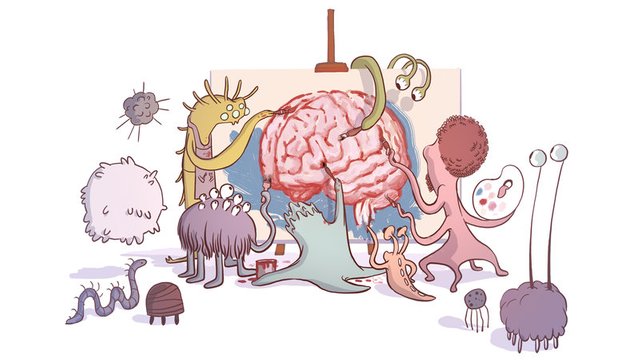Why You Need Bacteria In Your Colon

Bacteria in your colon are referred to by many different names – probiotics, good or bad bacteria, beneficial bacteria, acidophilus, disbiosis, micro flora, proflora. friendly flora, and unfriendly bacteria.
I simple use good and bad bacteria to refer to all the bacteria that exist in the small intestine and your colon.
Your colon has both good and bad bacteria. The good bacteria maintain the health of your colon by keeping the bad bacteria from multiplying and reducing constipation.
Most people have bad bacteria as the dominant condition in their colon. You can see this by the illnesses that exist throughout the world. Most people later in their life suffer from diseases that resulted from colon neglect and abuse.
Bad bacteria multiples when you,
Consume poisons such as pollution, pesticides, food additives such as preservatives, coloring, so on.
Drink alcohol
Eat processed foods
Have excess anxiety
Lack fiber in your diet
Use birth control pills
Use drugstore laxative
Use drugs and medication
Good bacteria in your colon consists of hundred of species of bacteria. The good bacteria are most active in a pH of 5.9 to 6.9- an acidic environment. This makes for a healthy colon.
Your colon serves as a home for the good bacteria, which ferment specific carbohydrates, which in turn keep your colon environment slightly acidic. The acid environment favors the good bacteria and keeps the bad bacteria and pathogens from multiplying.
The bad bacteria create an alkaline environment and are most active in a pH of 7.1 to 7.9
Again, the good bacteria creates an acidic environment and are most active in a pH of 5.9 to 6.9
Acidophilus and Bifidus are the main good bacteria that exist in your colon. The ascending colon, on the right side of your abdomen area, has the most bacteria. The quantity of bacteria becomes less in the transverse colon and lesser in the descending colon. Eventually, little bacteria is found in the sigmoid and rectum.
When good beneficial bacteria is dominant, in your colon, it prevents the spread of disease from various organisms – parasites, bacteria, viruses, fungi. The specific organisms
Shigella, salmonella, viruses, encephalitis, protozoan, amebas, staph, herpes, flu, cold viruses, comphylobacter, and CMV,
are the ones that creates killer diseases such as dysentery, blood poisoning, meningitis, pneumonia, influenza and encephalitis
The good bacteria keep these organisms in the minority, thus preventing them from multiplying, getting into the blood, and into the different body organs. They do this by their antibiotic like secretions, lactic acid production, and other secretions, which keep their environment acidic.
The good bacteria live and thrive on carbohydrates. When your body has good digestion and little carbohydrates reach your colon, the good bacteria population decreases and the bad bacteria become dominant.
Good bacteria need to be fed to keep it dominant in your colon. If there are any good bacteria left in your colon, then by feeding them, you can get them to multiply. If there are not any good bacteria in your colon, then you cannot reestablish the good bacteria by eating specific carbohydrate foods. To reestablish good bacteria, under this condition, you must do a flora enema.
In his book, Acidophilus and Colon Health, 1999, David Webster, also says,
“Indicators of a healthy colon flora are a soft but well-formed stool, with amber color and little or no odor, and that floats in water most of the time. When the stools are dry, dark brown, too solidly formed or too loose, and especially if there is a putrid odor, these are clear indicators of a putrefactive, alkaline-producing colon flora. Chronic constipation, diarrhea, and irritable bowel syndrome are often eliminated when your colon is restored and maintained at a slightly acid pH.”
In his research, Webster found that feeding the remaining good bacteria edible lactose whey rejuvenates the good bacteria in your colon. By drinking 2 – 5 tablespoons or more each day in a cup of distilled water enough lactose can reach your colon to feed the good bacteria. Webster recommends doing this for 30 days. After this period you can check your stools to see if you have reactivated you good bacteria
!cheetah ban
Mass plagiarism.
Congratulations @jackjon! You received a personal award!
You can view your badges on your Steem Board and compare to others on the Steem Ranking
Do not miss the last post from @steemitboard:
Vote for @Steemitboard as a witness to get one more award and increased upvotes!